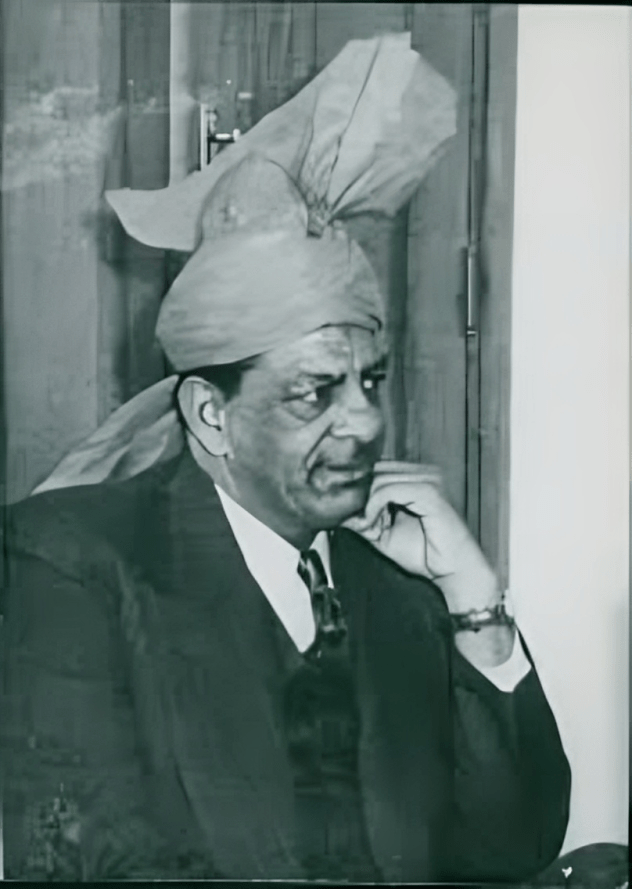Raja Ghazanfar Ali Khan was born in 1895 in a town of Punjab, Pind Dadan Khan. He received his early education at his native place. After passing his matriculation from High School at Jhelum, he took admission at Government College Lahore. When he was the student of B.A., the First World War had just ended and the demand of self-rule for the Indian people was getting momentum. When demonstrations against the government’s Rowlett Act erupted throughout the country, Raja Ghazanfar Ali Khan who was member of the University Training Corps, also took part in those demonstrations. For that reason, he was expelled from the university along with other fifty students. Soon he left Lahore for his native town. For sometime, he did not take direct part in any political activity but kept a close watch on the Indian politics.
When the Unionist Party was founded, he started taking part in its meetings. In 1923, he became member of the Legislative Council. The same year, he saw Quaid-i-Azam during a meeting of the Muslim League and introduced himself. Quaid-i-Azam asked him to join Muslim League but he politely declined to do so. However, in 1926, during the meeting of the Legislative Council, he spoke eloquently in the response of Madan Mohan Malwiya’s speech. He said on the floor of the Council that “Hindu-Muslim riots had become the norm of the day and no discrimination would be made against any community on the basis of its demographic conditions”. He remained in touch with the Quaid after the Quaid-i-Azam fourteen points and 1932 Communal Award. When in 1935, Sir Fazl-e-Hussain developed serious differences with the Quaid, Ghazanfar Ali Khan played a vital role in diffusing the tension. He had incessant correspondence with the Quaid during the same period. In 1937 elections, while Unionist Party grabbed the lion’s share winning eighty-three Muslim seats and twenty-three Hindu seats, Muslim League could secure only two seats, one by Ch Barkat Ali and the second by Raja Ghazanfar Ali Khan. Though Raja Ghazanfar Ali Khan also joined Unionist Party and worked as its parliamentary secretary till 1946, during the whole episode, he continued his correspondence with the Quaid and gave his suggestions for political affiliations with Sir Sikander Hayat Khan. He also urged Quaid-i-Azam to revamp the Muslim League. In 1943, Quaid-i-Azam and Khizar Hayat Tiwana developed serious differences, Raja Ghazanfar Ali Khan and Sufi Abdul Hameed, working as two parliamentary secretaries also resigned on the behest of Quaid-i-Azam. The former rejoined Muslim League. But when the Unionist Party announced that a Muslim Leaguer could also become its member simultaneously, Raja Ghazanfar Ali Khan again became the parliamentary secretary of Unionist Party.
After 1945-46 elections, when British government in India announced the formation of the interim government, Muslim League nominated Raja Ghazanfar Ali Khan as one of the five members. He became health minister. When Sir Francis Modie dismissed his cabinet in Sind, Muslim League appointed Raja Ghazanfar Ali Khan to campaign for the party. He did this job successfully and Muslim League got overwhelming victory.
When Pakistan came into being he was made minister of Rehabilitation. The task of rehabilitation was arduous but he worked diligently for almost a year. In 1948, he was made ambassador of Pakistan to Iran. In 1953, he was made Pakistani High Commissioner to India. Thereafter he also served as ambassador to Turkey. During his tenure as ambassadors to these countries had to go through important issues confronting Iran, Pakistan and the Muslim World including Iranian Oil Conflict, Suez Canal Crisis and Palestine and Kashmir issue.
He died in 1963 at the age of sixty-eight years.
This article was last updated on Friday, Jan 04, 2008






